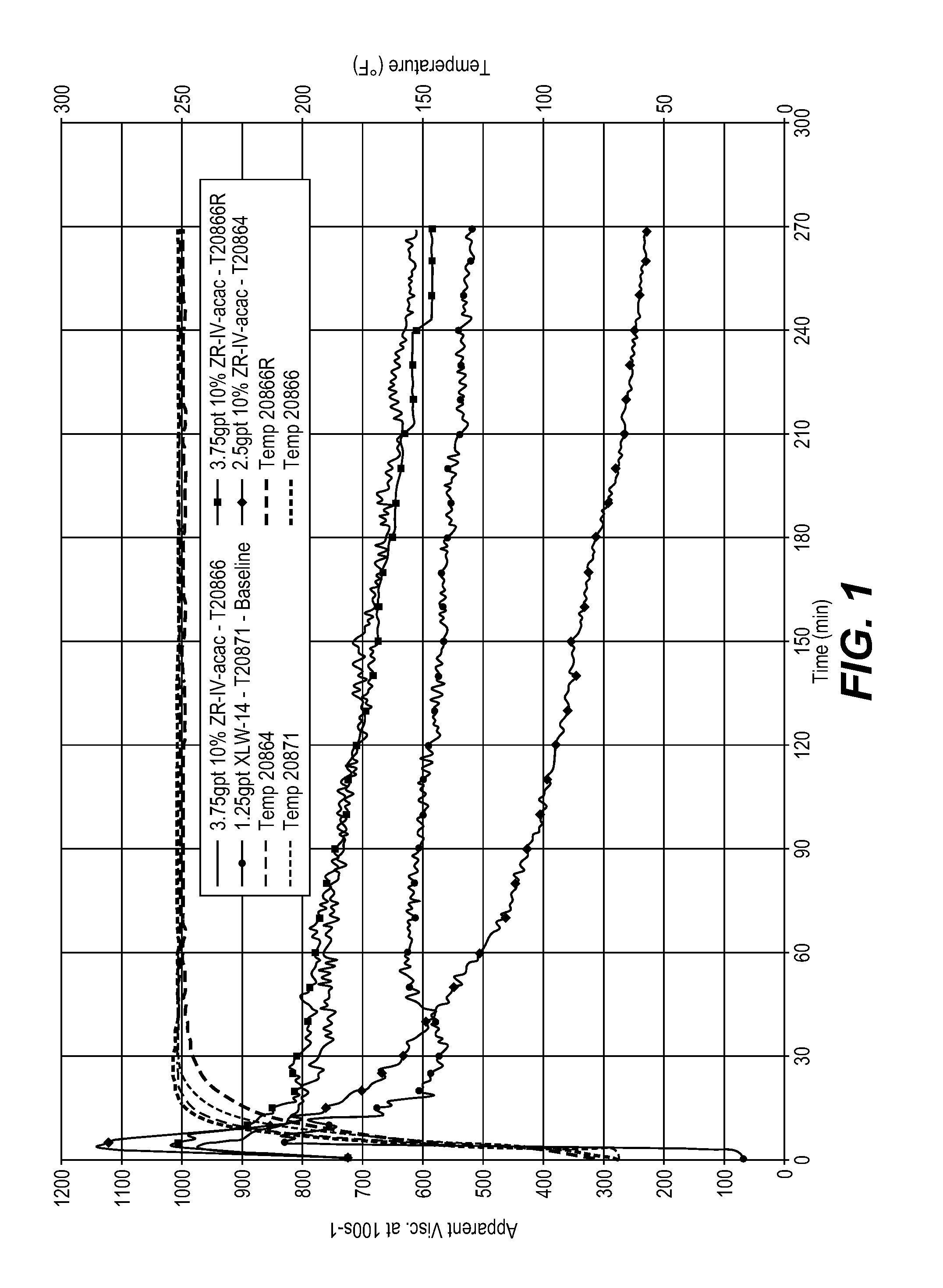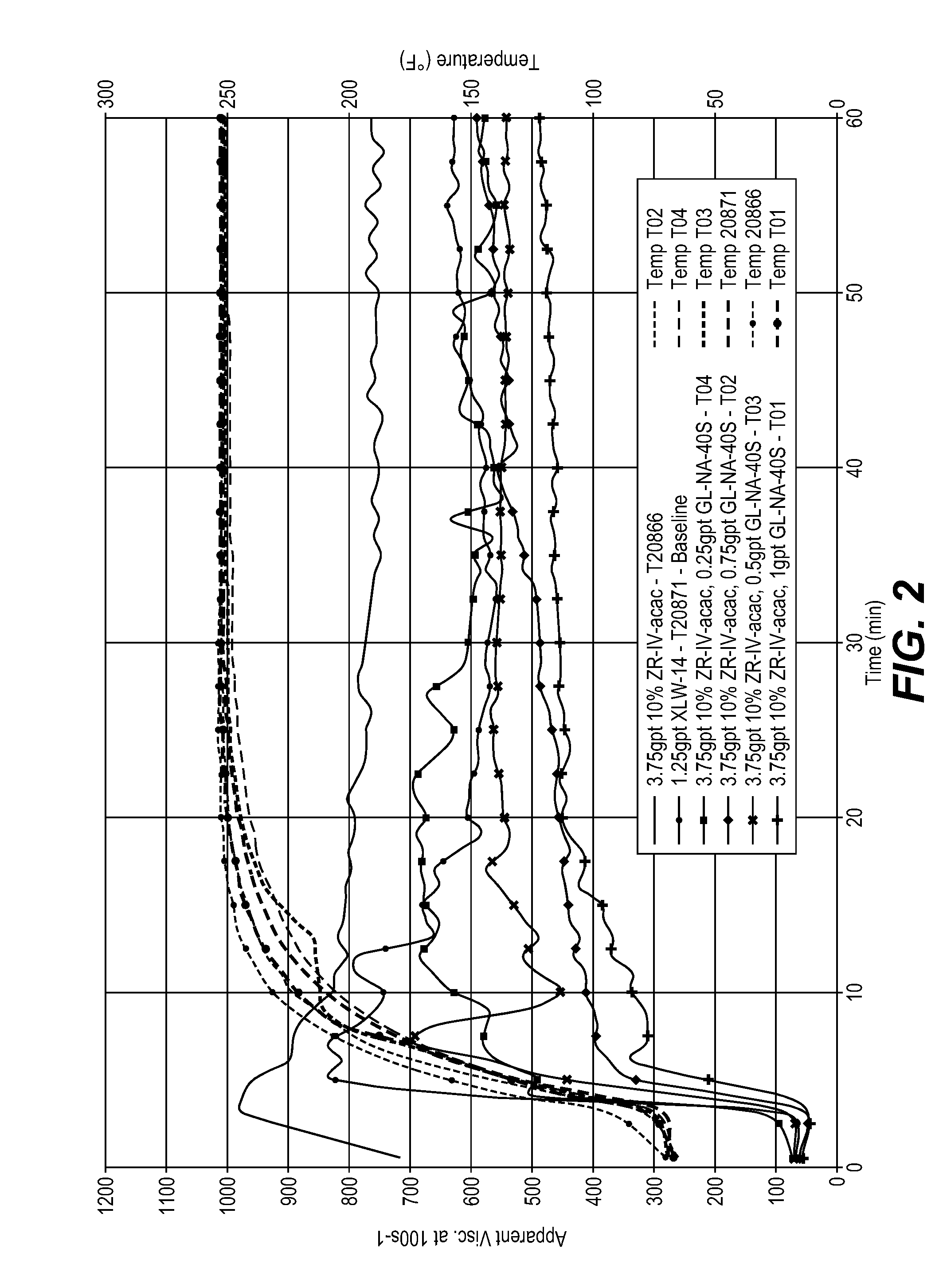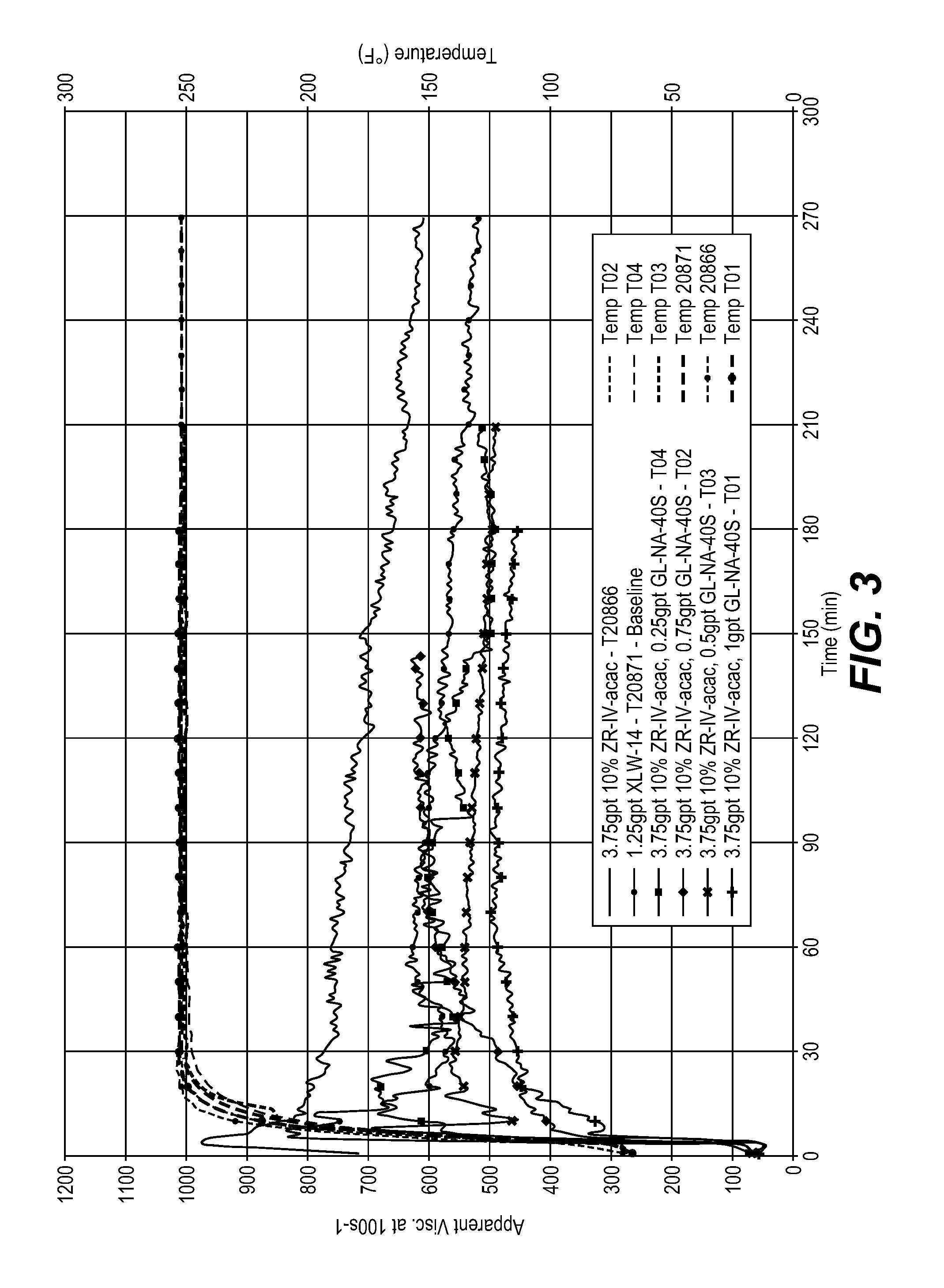Method of delaying crosslinking in well treatment operation
- Summary
- Abstract
- Description
- Claims
- Application Information
AI Technical Summary
Benefits of technology
Problems solved by technology
Method used
Image
Examples
example 1
[0048]A fluid was prepared by first hydrating 1 liter of a 30 pounds per 1000 gal carboxymethyl guar linear gel for 30 minutes using a standard mixer at 1500 rpm. The contents were then poured into an OFITE sample cup and the viscosity of the linear gel was determined on a Model 900 viscometer, commercially available from OFI Testing Equipment, Inc. (OFITE) to confirm complete hydration. To the fluid was then added 3 gpt of sodium thiosulfate stabilizer (GS-1L, available from Baker Hughes Incorporated, 1 gpt potassium containing buffer capable of pH 10 (BF-9L, available from Baker Hughes Incorporated), and 1 gpt Claytreat-3C clay stabilizer, available from Baker Hughes Incorporated. To the base fluid was added either a 10% zirconium (IV) acetyl acetonate in methanol (ZR-IV-acac, available from SACHEM Europe B.V.) or a zirconate based crosslinker (XLW-14, available from Baker Hughes Incorporated).
[0049]For Fann 50 testing, the fluid was initially sheared at 100 s−1 followed by a shea...
example 2
[0050]To the base fluid of Example 1 was added either ZR-IV-acac or XLW-14 and optionally glutamic acid-N,N-diacetic acid tetrasodium salt, 38% aqueous (Dissolvine GL-38-S, available from Akzo Nobel Polymer Chemicals, Amsterdam, Netherlands). FIGS. 2 and 3 show the results for crosslink delay with no high shear period. As demonstrated, the fluid with 0.25 gpt GL-NA-40S showed a similar delay time to the baseline fluid with XLW-14. The fluid with 0.25 gpt GL-NA-40S also showed comparable fluid stability performance to the baseline fluid with XLW-14. When the concentration of GL-NA-40S was higher than 0.5 gpt GL-NA-40S the fluid had a 30 minute delay in reaching peak viscosity. In all tests with the GL-NA-40S product the initial “peak” viscosity was lower than the “peak” viscosity obtained with the XLW-14 crosslinker.
example 3
[0051]FIG. 4 shows the Fann 50 results of the fluid at 250° F. with a 3 minute initial high shear of 450 s−1. FIG. 4 demonstrates that a concentration of 1.25 gpt GL-NA-40S showed slightly less initial “peak” viscosity but better stability than the XLW-14 crosslinker. Further, FIG. 4 shows that a minimum loading of 0.5 gpt GL-NA-40S was needed to show comparable fluid stability performance to the fluid with 1.25 gpt XLW-14 under the same conditions. As the concentration of the GL-NA-40S was increased from 0.5 to 1.25 gpt the fluid stability improved and initial “peak” viscosity increased. FIG. 4 does demonstrate that the concentration of the GL-NA-40S needed for optimization of fluid formulation varied depending on the high shear to which the fluid was exposed. The initial “peak” viscosity of all samples containing GL-NA-40S was lower than the “peak” viscosity obtained with the XLW-14 crosslinker.
PUM
 Login to View More
Login to View More Abstract
Description
Claims
Application Information
 Login to View More
Login to View More - R&D
- Intellectual Property
- Life Sciences
- Materials
- Tech Scout
- Unparalleled Data Quality
- Higher Quality Content
- 60% Fewer Hallucinations
Browse by: Latest US Patents, China's latest patents, Technical Efficacy Thesaurus, Application Domain, Technology Topic, Popular Technical Reports.
© 2025 PatSnap. All rights reserved.Legal|Privacy policy|Modern Slavery Act Transparency Statement|Sitemap|About US| Contact US: help@patsnap.com



